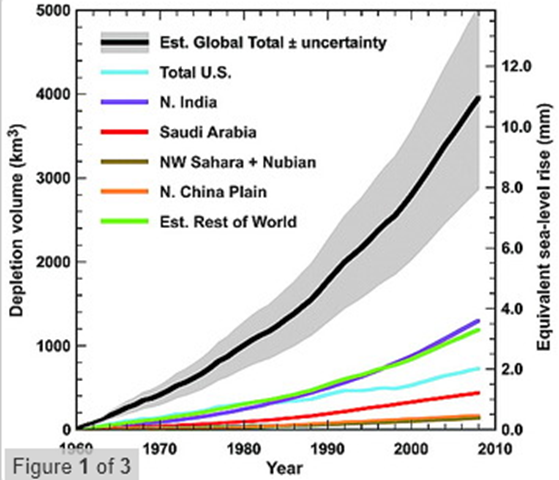Groundwater greed driving sea level rises
By Michael Marshall
25 September 2011
SLOWLY and almost imperceptibly the seas are rising, swollen by melting ice and the expansion of seawater as it warms. But there’s another source of water adding to the rise: humanity’s habit of pumping water from underground aquifers to the surface. Most of this water ends up in the sea. Not many scientists even consider the effects of groundwater on sea level, says Leonard Konikow of the United States Geological Survey in Reston, Virginia. Estimates were published as far back as 1994 (Nature, DOI: 10.1038/367054a0), but without good evidence to back them up, he says. The last report of the Intergovernmental Panel on Climate Change said that changes to groundwater reserves “cannot be estimated with much confidence”. Konikow measured how much water had ended up in the oceans by looking at changes in groundwater levels in 46 well-studied aquifers, which he then extrapolated to the rest of the world. He estimates that about 4500 cubic kilometres of water was extracted from aquifers between 1900 and 2008. That amounts to 1.26 centimetres of the overall rise in sea levels of 17 cm in the same period (Geophysical Research Letters, DOI: 10.1029/2011gl048604). That 1.26 cm may not seem like much, but groundwater depletion has accelerated massively since 1950, particularly in the past decade. Over 1300 cubic kilometres of the groundwater was extracted between 2000 and 2008, producing 0.36 cm of the total 2.79-cm rise in that time. “I was surprised that the depletion has accelerated so much,” Konikow says. It’s not clear if the acceleration will continue. Konikow points out that some developed countries are cutting back on aquifer use and even trying to refill them when there is plenty of rainfall. “I would like to see that implemented more,” he says. “While there remain significant uncertainties, Konikow’s estimate is probably the best there is for groundwater depletion,” says John Church of CSIRO Marine and Atmospheric Research in Hobart, Tasmania, Australia. Konikow, Church and colleagues have used the data to compare the contributions of the different sources of sea-level rise and found that aquifer depletion is almost as significant as the ice melt in Greenland and Antarctica combined (Geophysical Research Letters, DOI: 10.1029/2011gl048794).
